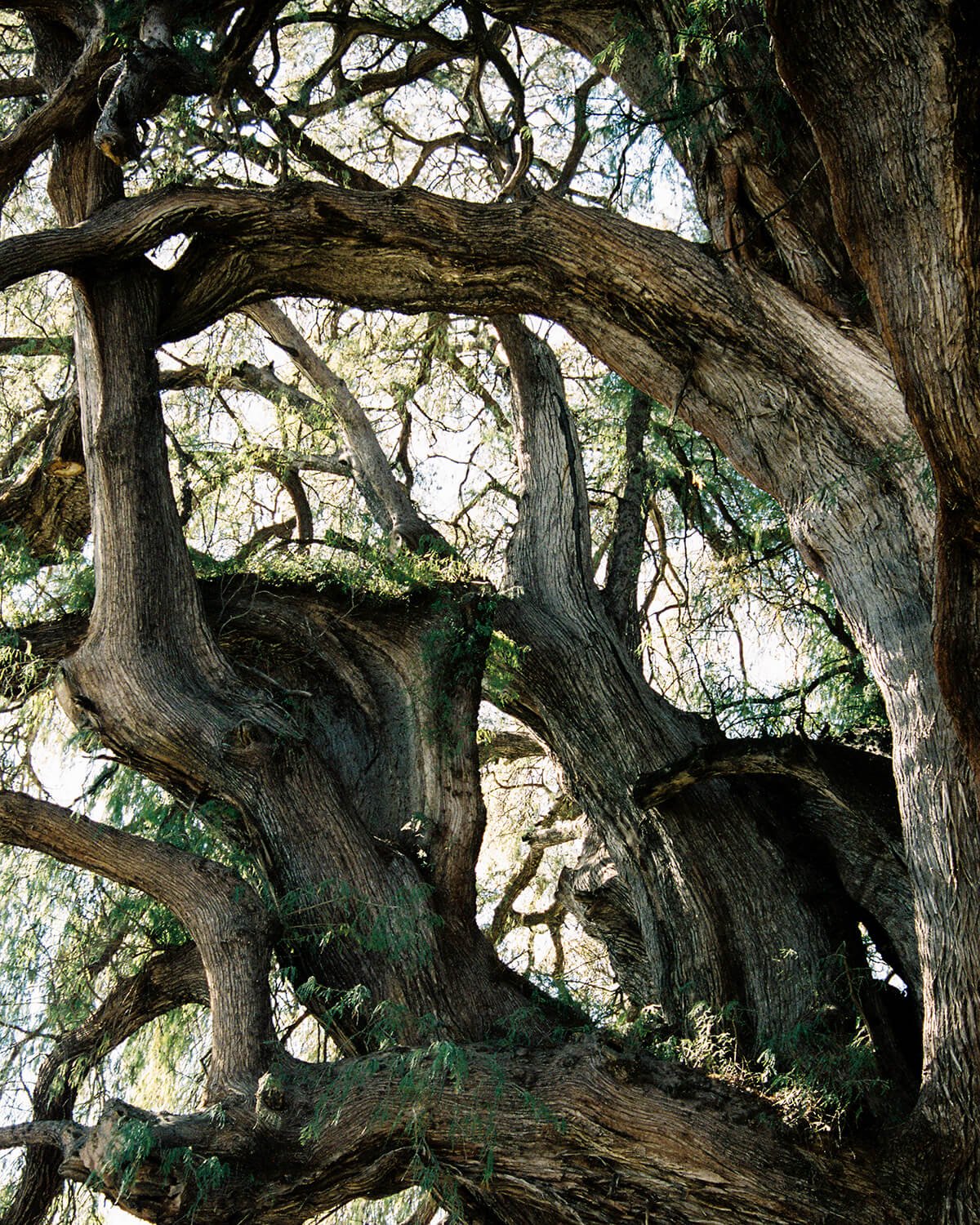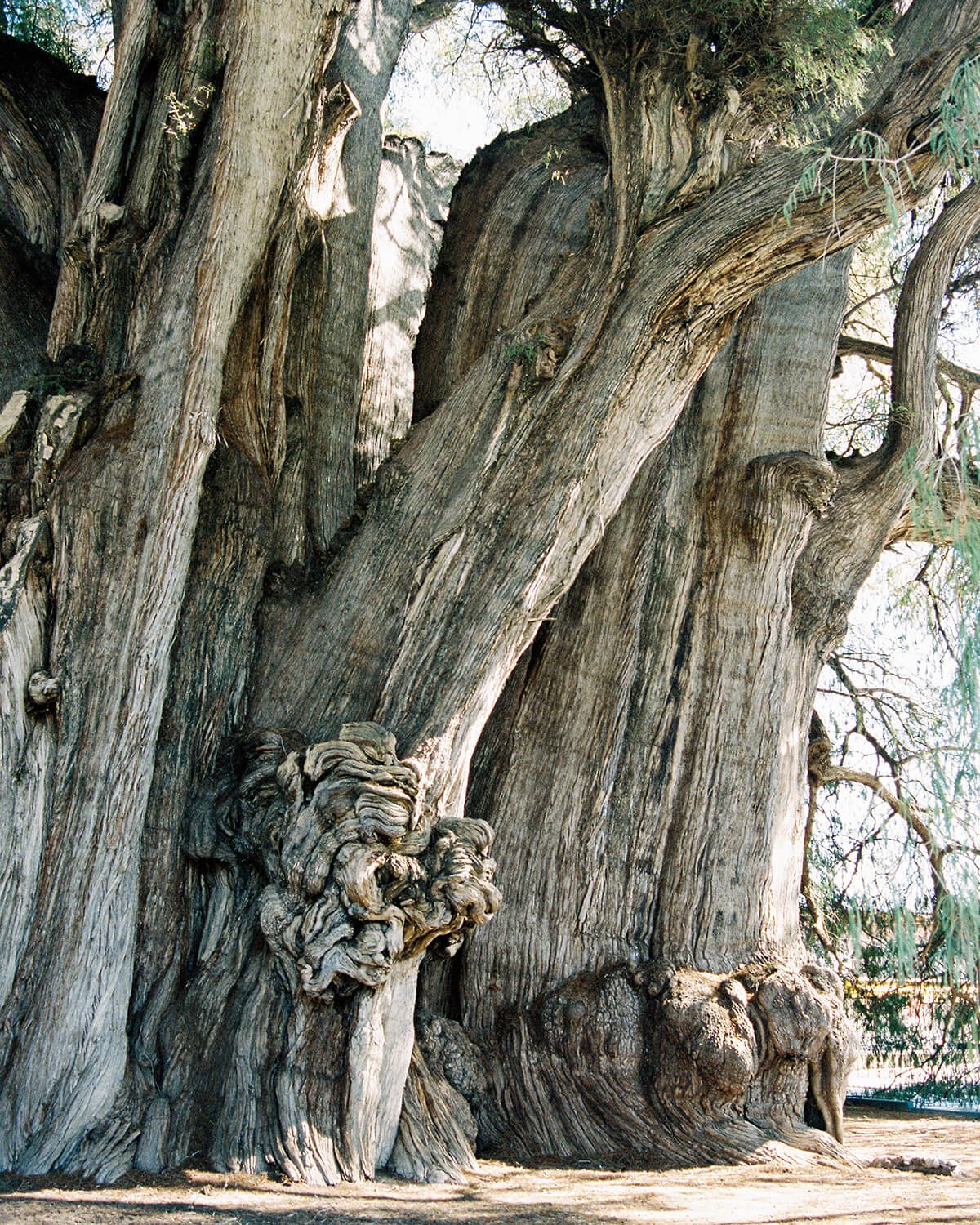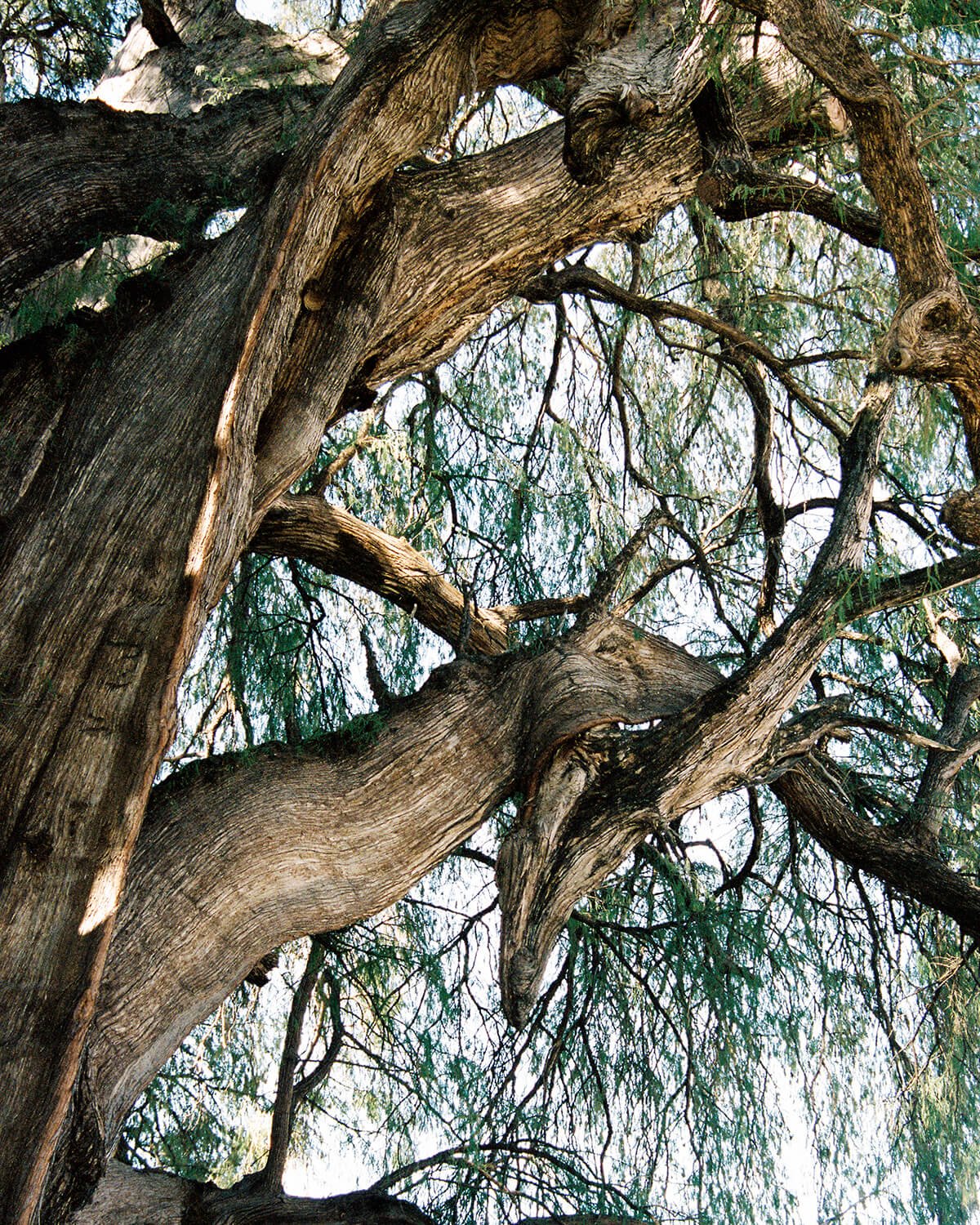Arbol del Tule: Oaxaca's Oldest Ahuehuete Tree
The Legend of El Rey Condoy and the 2,000-Year-Old Montezuma Cypress Tree in Santa María del Tule, Oaxaca
Just a short trip from Oaxaca City, in the quiet town of Santa María del Tule, stands the legendary Árbol del Tule—a towering Montezuma bald cypress believed to have been planted by the mythical giant El Rey Condoy over two thousand years ago. Known affectionately as the Tree of Life of Oaxaca, this natural wonder is easily accessible by public transportation, inviting visitors to experience its storied roots and remarkable presence firsthand.
How to Get Here to the Municipality of Santa María del Tule
Hop on the little purple bus in front of the VW dealership on the northeast side of the city or at Parque del Amor on the southwest side of the city.
If you prefer a more leisurely pace, consider renting a bike in Oaxaca Centro from places as Mundo Ceiba and enjoy a scenic ride all the way to El Tule, savoring the beautiful surroundings along the way.
As you make your way toward El Tule, take a moment to savor Caldo de Piedra—a traditional, hearty soup featuring fresh seafood like shrimp and fish, uniquely cooked by placing a heated stone directly into the bowl to boil everything to perfection right before your eyes. For those interested in local festivals, the best time to visit is the second Monday of October during the festival celebrating the tree. Otherwise, it’s usually quiet after 1 p.m. as El Tule often serves as the first stop on guided tours, acting as a gateway to Tlacolula, Matatlán, and Mitla further east.
The Tule Tree: Oldest Tree in Mexico and the Tree of Life of Oaxaca
El Árbol del Tule, a Montezuma bald cypress tree (Taxodium mucronatum), is recognized by the Guinness World Records as an extraordinary Ahuehuete—Nahuatl for "old man of the water"—believed to be over two thousand years old. In October 2015, the Municipality of Santa María celebrated El Tule's 2,000th birthday, affirming its place as both the oldest and largest living tree not only in Oaxaca, but all of Mexico.
This majestic giant also holds the title of the widest tree in the world, boasting a circumference of around 138 feet and reaching a height of approximately 116 feet with a diameter of 46 feet. To fully encircle its massive trunk, it would take at least 30 average-sized adults with hands joined.
Though some have speculated that El Tule might be a fusion of multiple trees, DNA studies have confirmed it is, in fact, a single cypress. In recognition of its immense cultural and historical significance, it was placed on UNESCO's tentative list of World Heritage Sites in 2001; however, it was removed from the list in 2013. But perhaps what makes this arboreal wonder truly unique are the ethereal shapes in its trunk and branches, which resemble animals such as lions, dolphins, and antelopes. These natural forms have inspired its cherished nickname, "The Tree of Life."
El Rey Condoy: The Giant Who Planted the Tule Tree
Over two thousand years ago, in the Oaxacan highlands near Mt. Zempoaltépetl, a serpent emerged from the jungle and circled a Mixe temple, laying two eggs before disappearing. One egg hatched into a snake, and the other, a human child who grew at an astonishing rate, reaching the stature of a young man within a year. Convinced of his royal lineage, the old woman who found him named him Rey Condoy, or King Condoy.
Despite the old woman’s efforts to ease fears, the villagers remained suspicious due to Rey Condoy's accelerated aging, immense strength, and uncanny ability to command the weather. When the old woman passed away, Rey Condoy, already a giant by this time, embarked on a journey with his serpent sister, using a 130-pound Ahuehuete branch as a walking cane to support his immense stature. In Mitla, he began constructing a fortress but was startled by the crowing of a rooster and left it unfinished—a legend echoed in the story of Cuilápam.
Eventually, they reached what is now Santa María del Tule. Exhausted, Rey Condoy planted his cane in the marshland, and it took root, growing into the magnificent Ahuehuete tree now known as El Tule. When news came of their village under attack, Rey Condoy and the serpent returned, repelling invaders with his power over the elements. Even Hernán Cortés, attempting to subdue the area centuries later, failed—some say because the spirit of Condoy continues to protect Mt. Zempoaltépetl and its surroundings. Today, the people of this region, the Mixe people, are known as the never conquered.
It's The End of The World as We Know It
Another version of the legend tells of Rey Condoy personally thwarting multiple failed campaigns led by Hernán Cortés in this region of Oaxaca. According to ancient Zapotec astronomy, however, the tree was planted 1,400 years ago by Pechocha, a guardian priest of Ehécatl, the God of Wind.
In some accounts, Rey Condoy passed away soon after returning to his village, while others believe he is immortal, residing in a hidden cave amidst the dense vegetation of Mt. Zempoaltépetl. Before his disappearance, or passing, depending on the version, Rey Condoy assured his people that as long as the tree stood where he once rested, it would protect them in his absence.
But Rey Condoy also issued a grave warning: should the tree ever fall or die, the world would be plagued by catastrophic natural disasters, bringing an end to life as we know it. In response, the serpent transformed herself into an Ahuehuete tree, standing as a silent guardian just behind the site of the Santa María de la Asunción church, watching over El Tule until the end of days. Tragically, since 1990, El Tule has been slowly dying.













The legend recounting why the church of Cuilápam was never completed.